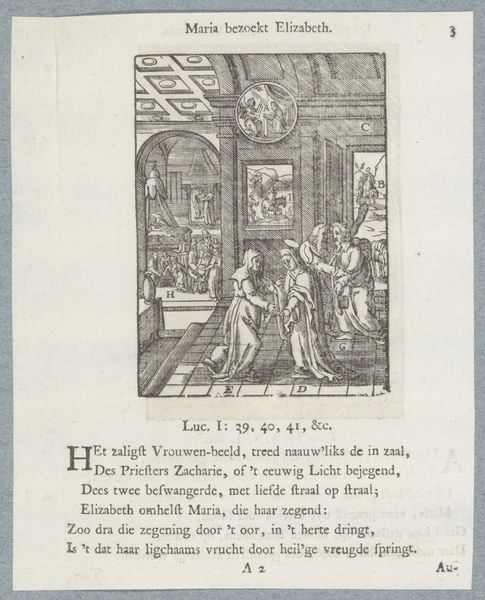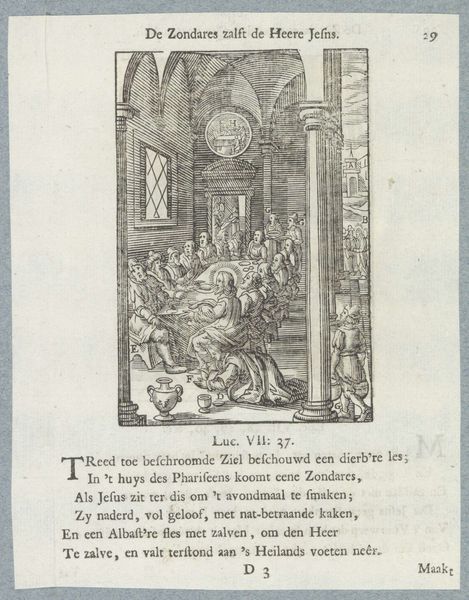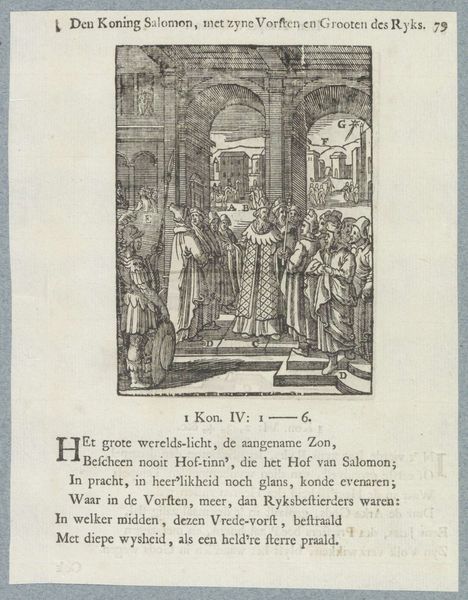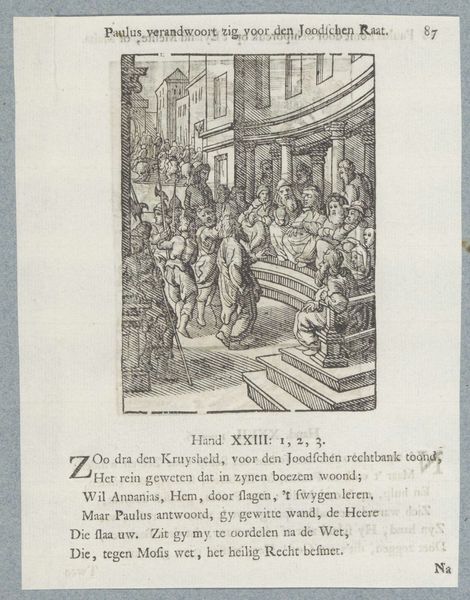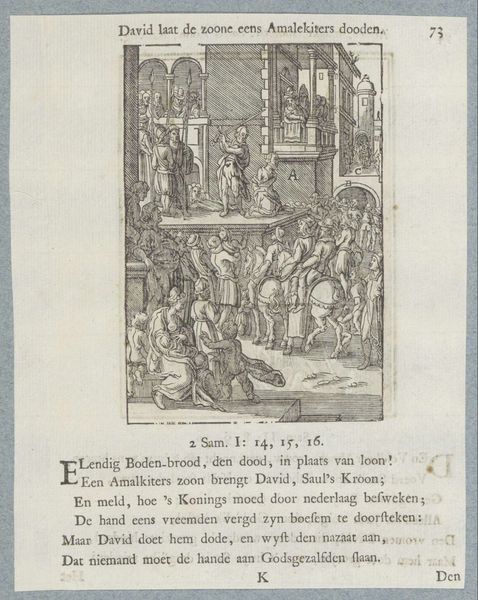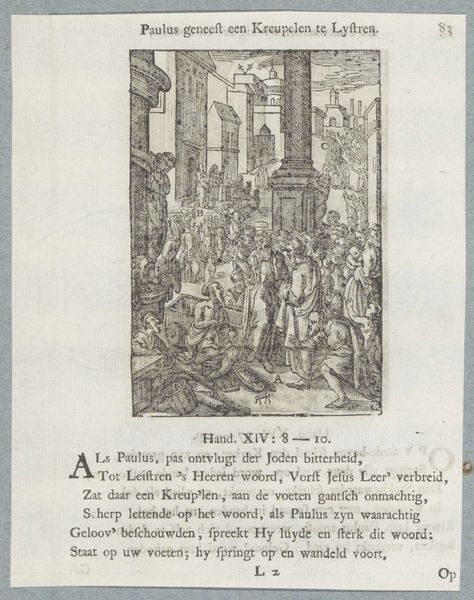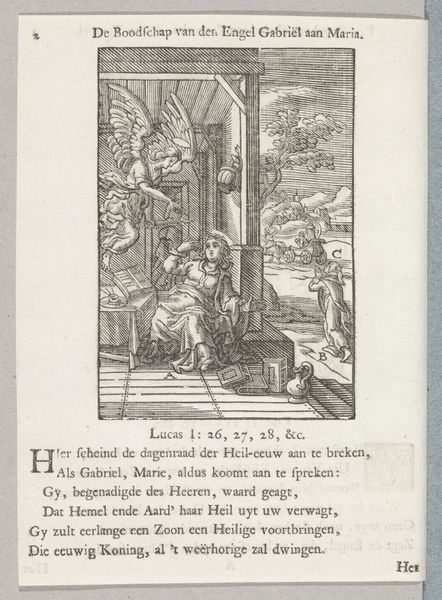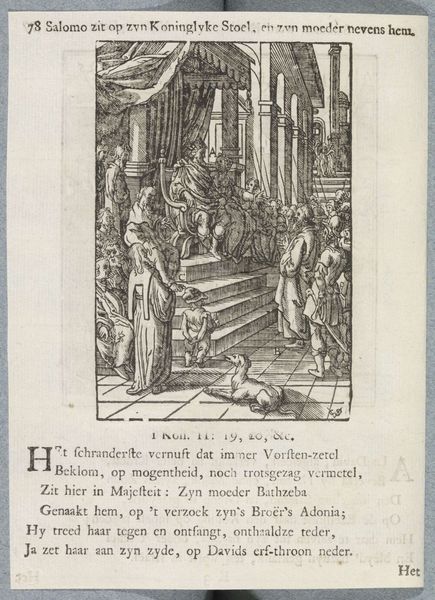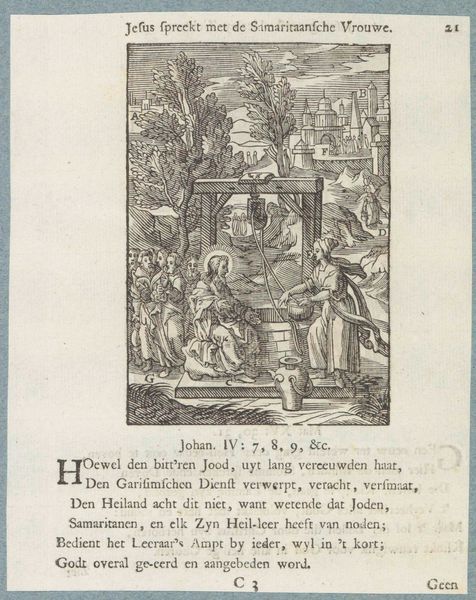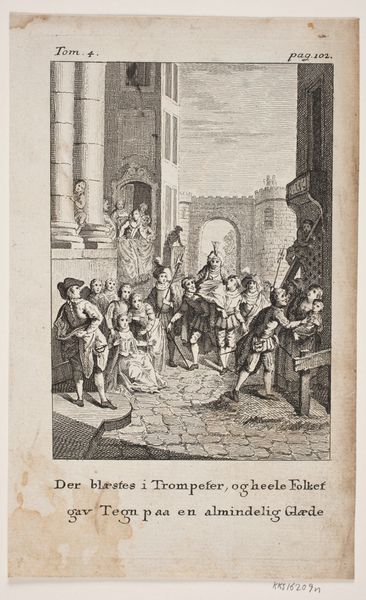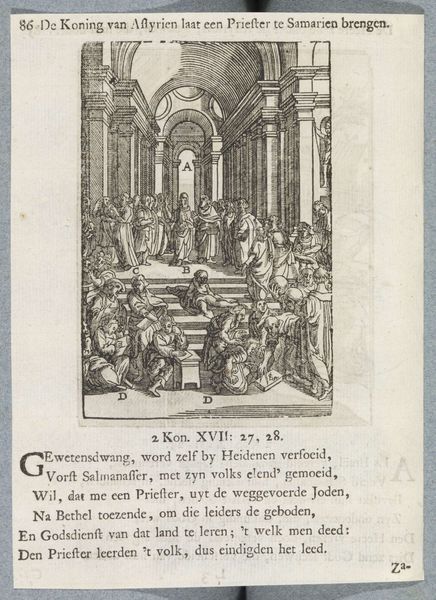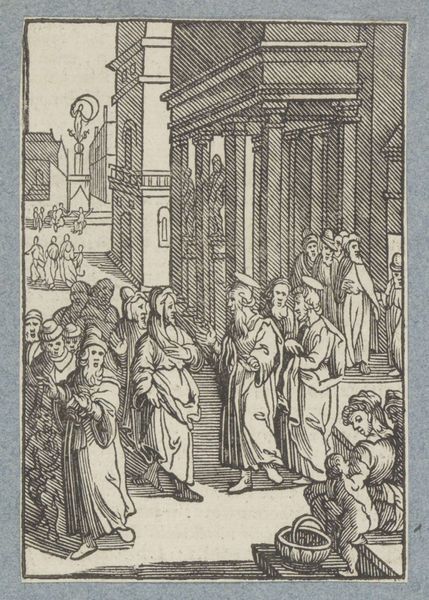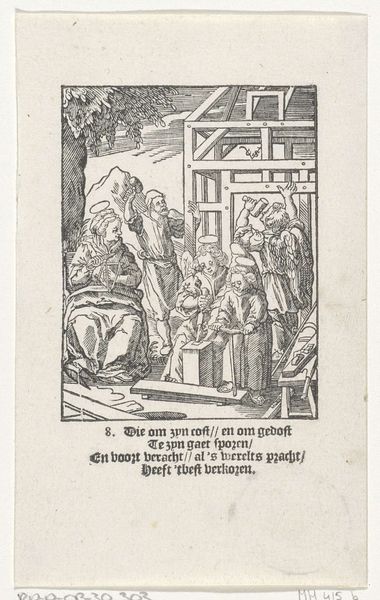
print, engraving
#
narrative-art
#
baroque
# print
#
engraving
Dimensions: height 109 mm, width 75 mm, height 168 mm, width 136 mm
Copyright: Rijks Museum: Open Domain
Editor: So, this engraving, "Paulus redetwist met Elymas," by Christoffel van Sichem II, likely created between 1629 and 1740, depicts a densely populated scene. There's a real sense of theatrical drama created through the sharp lines and stark contrast. What story do you see unfolding here, considered through its historical and cultural context? Curator: What I find particularly compelling about this print is how it participates in a long tradition of using biblical narratives for specific socio-political purposes. It's crucial to consider how these images functioned within the religious and cultural landscape of the Dutch Republic, particularly its role in shaping perceptions about religious authority and its impact on society. What aspects of its social function do you observe? Editor: Well, seeing the narrative pulled from scripture and considering the era it comes from makes me consider its usage in religious instruction... Perhaps in the home or in schools? The detail is quite intricate. Curator: Precisely! And further, how might the availability and distribution of prints like these, compared to, say, painted works, affect their accessibility to a broader public and, consequently, their influence on shaping religious and moral beliefs? Does it suggest anything to you about image production at the time? Editor: That’s a great point. Reproducibility made this visual interpretation far more pervasive in society, for everyday people to experience the message intended. I see that this print, even in its detail, participates in influencing collective ideas. Curator: Exactly! Thinking about the "public role of art" through an engraving like this forces us to consider its distribution and how that changed how the public engaged with these kinds of important religious themes at the time. What do you think is the biggest thing you'll take away from understanding it in this light? Editor: Viewing this artwork through its historical role has made me understand that even smaller works had a role in shaping social perspectives. It broadens the impact art can have outside of museum walls. Curator: Indeed. Recognizing this gives us the necessary tools to think about how art acts within and on culture, then and now.
Comments
No comments
Be the first to comment and join the conversation on the ultimate creative platform.

